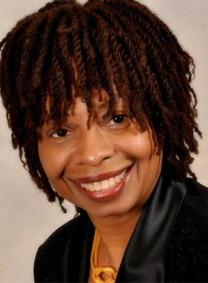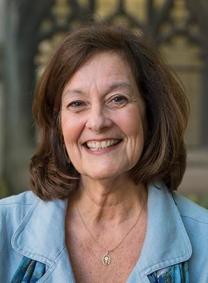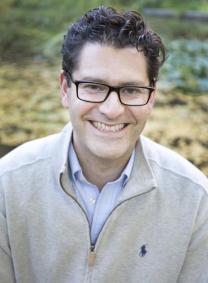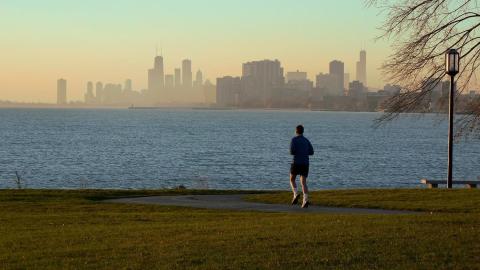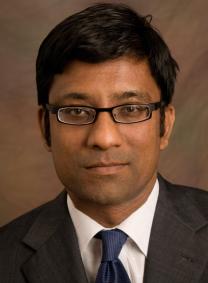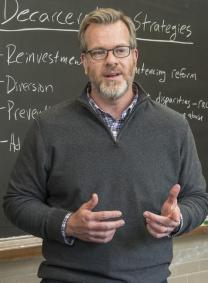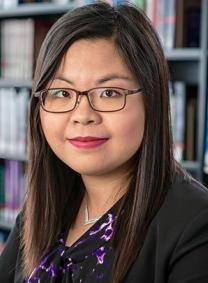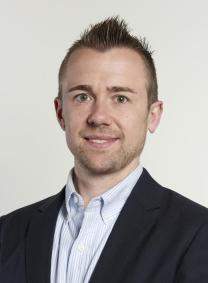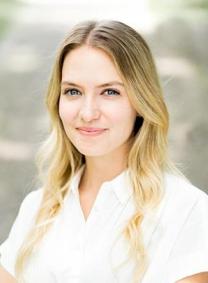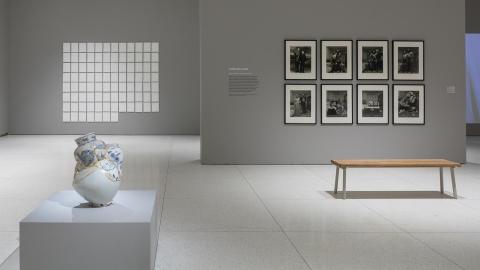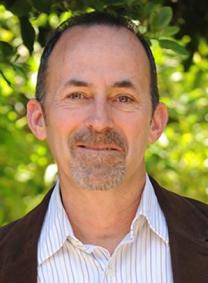What we’ve learned from a year of COVID-19

This story was originally published by UChicago News. You can read the article on their site here.
A year into the pandemic, nine UChicago experts discuss impacts on health, science and more
One year ago, the World Health Organization officially declared COVID-19 a pandemic, calling on countries to “take urgent and aggressive action” to stop the spread of the disease. Since March 11, 2020, our world has been transformed: In the United States, more than 500,000 lives have been lost, and economic and social activity have been disrupted in unprecedented ways.
While the public health consequences of the pandemic have been among the most acute, the novel coronavirus has left no domain untouched: The arts have pivoted to virtual performances and programs, religious communities have found new ways to offer services, and lawyers have had to think differently about the government’s role in mitigating the crisis.
Below, nine University of Chicago scholars and experts discuss what they’ve learned from a year of COVID-19, examining how the pandemic has impacted everyday life and transformed how work is conducted in their own disciplines. Their comments help clarify just how much our world has changed—and what challenges lie ahead.
Doriane Miller, Associate Professor of Medicine and Director of the Center for Community Health and Vitality
From my perspective as a primary care physician, COVID-19 hasn’t resulted in revelations that have changed my practice so much as it has underscored the severity of the enormous health disparities that we knew existed in Black and brown communities around the city.
I’ve spent much of my career working in settings like community health centers, and many of the patients that I’ve cared for over the years have had chronic health conditions like high blood pressure, diabetes, obesity and COPD. I do what I can to provide care for these conditions, but they stem in part from “social determinants of health” which impact people’s ability to care for themselves. These could be things like their ability to exercise in a safe place; afford the medications that are prescribed for them; buy healthy food; and avoid exposure to pollutants.
When these abilities are limited, health disparities are produced. But it’s important to note that acute illness hasn’t been the only negative outcome of the pandemic for these communities: They’ve also dealt with lost economic opportunities, and mental health challenges in terms of the sheer amount of grief that many communities of color, especially, have experienced.
Many of my patients have lost a family member or friend to COVID-19, in a year that has also been marked by the culmination of structural inequities in other areas. In particular, the killings of George Floyd, Breonna Taylor and others have added to a sense of collective grief not only within families, but also about what they see as an extension of their positions in society.
Ultimately, a lack of dignity, respect, adequate preparation and care at a fundamental level has led to the deaths of people who didn’t need to die—not just in Black and brown communities, but other communities as well.
“Ultimately, a lack of dignity, respect, adequate preparation and care at a fundamental level has led to the deaths of people who didn’t need to die.”
Cynthia Lindner, Director of Ministry Studies and Clinical Faculty for Preaching and Pastoral Care in the Divinity School
A year ago, American religious practice pivoted dramatically, as congregations closed their doors and began to offer services like preaching, prayer and meditation—even hospital bedside visits—virtually. Since then, worshippers have mourned the loss of holy spaces and communal practices, especially during holy seasons like Passover, Easter and Ramadan, and on other occasions when the community normally assembles in solidarity, such as to bless a marriage or to mourn the death of a loved one.
Despite this, people of faith have also been rediscovering powerful truths about human existence and reliable resources for courage and compassion in ancient narratives and practices that were themselves forged in times of human suffering and exile. Without access to the buildings and programs that have identified and sometimes constrained them, many religious communities are redefining themselves and their purposes in more expansive, active ways: cultivating networks that transcend time and space; fashioning portable ritual practices to sustain individuals and families in their homes; and reconfiguring inclusive and accessible worshipping communities in a variety of forms, from online small groups to outdoor sessions.
Most significantly, innovative faith communities are beginning to reclaim the work of caregiving that was essential to their spiritual practice before it was professionalized or relegated to the clergy: sharing the hard work of caring for one another through phone trees, small groups and prayer; supporting the elderly and the vulnerable in their neighborhoods through networks of mutual aid; advocating not only for those in need, but for those essential workers who bear more than their share of the burden of an ever-expanding demand for care; and attending with renewed urgency to the integrity of human interdependence and the healing of our planet.
Marc Berman, Associate Professor of Psychology
COVID-19 has really clarified the crucial importance of green space in cities. During the pandemic, the outdoors has been a safer place for socially-distant activities than indoors, but many cities just don’t have enough space for people outside, and disparities exist between neighborhoods, with higher-income ones having more trees. Our research suggests that this is a big problem that transcends the current crisis, because green space positively impacts our health in all kinds of ways.
We’ve learned that trees, especially, have important benefits for our health: A brief walk in nature, say 50 minutes, can improve your working memory and attention capacity by about 20%. You can get those benefits at any time of the year, winter or summer, and they apply whether or not you “like” nature. We also find that those effects are even stronger for individuals who have been diagnosed with depression, and that more green space in one’s neighborhood is related to lower rates of diabetes, stroke and heart disease even when controlling for income, age and education levels.
Our society still tends to think of green space as an amenity, so it’s not a “front page” issue. But after we think about important topics like vaccine distribution and reopening schools safely, we should also recognize that we need outdoor spaces where people can interact safely and get the cognitive restoration they need. Finally, when it comes to planting trees or rethinking our use of public spaces, a bottom-up, rather than a top-down, approach to working with communities is best: We should share the benefits of green space, while listening to residents’ own priorities.
Aziz Huq, Frank and Bernice J. Greenberg Professor of Law
If COVID-19 has illuminated the salutary contributions of virology and epidemiology, it has largely been a cause for lawyers and legal scholars to hang their heads in shame. More than a half-century of administrative law scholarship conduced to a federal bureaucracy that proved unable to meet the elementary challenges of the pandemic from its earliest days. The mechanisms of public accountability, celebrated by scholars of the presidency as levers to elicit good policy, spectacularly failed: The inelasticity of most support for and opposition to the president last year leeched away any incentive he might have had to step up to the plate.
America’s much-touted federalism conduced to a fragmentary and moth-eaten public health infrastructure that only added to the death toll. And our feted law of equality has literally nothing to say about the tragedy of massive disparities between majority and minority racial groups.
Emphatically, these are failures of law; the hecatomb stains our sandals. But will the American legal academy seriously reflect on these tragic shortfalls? Does it have the capacity to do better? I wish I could be more optimistic.
Matt Epperson, Associate Professor at the Crown Family School of Social Work, Policy, and Practice
The COVID-19 pandemic has, again, made it abundantly clear that inequality fueled by structural oppression and racism continues to harm people in the United States. American Indian, African American and Latinx persons are three times as likely to be hospitalized and twice as likely to die from COVID-19 compared to white, non-Hispanic people. Similarly, Black and Latinx people are receiving smaller shares of vaccinations compared to their shares of cases and deaths.
Early in the pandemic, jails and prisons quickly emerged as COVID-19 hotspots. In April 2020, the Cook County Jail was reported to be the nation’s largest-known source of COVID infections. Nationally, one in every five people in prison has tested positive for the coronavirus, with some states experiencing infection rates of 50% or more.
Prisons and jails are, of course, crowded environments where the coronavirus can quickly spread. But despite pleas from advocates and family members of those incarcerated, most facilities have made only modest reductions, if any reduction at all, in the numbers of people being caged. It is no coincidence that the incarcerated population is disproportionately Black, brown and poor—populations that face persistent social and health challenges.
But COVID has revealed something even more disturbing: The criminal legal system, in most cases, will keep people caged even if this means they could become seriously ill or die, instead of actively seeking alternatives that would be more effective at upholding both public health and safety.
Zhiying Ma, Assistant Professor at the Crown Family School of Social Work, Policy, and Practice
By the time we all get vaccinated, it will be well over a year since quarantines first began. It’s been a disorienting experience and a challenge for many of us, marked by an extended period of separation from our family and friends and constantly simmering anxiety.
My research focuses in part on how families and communities in China care for people who have been diagnosed with serious mental illness. As I’ve continued that work during the pandemic, I’ve begun to think about our psychic and social vulnerability more broadly. We’re in a moment where attention to mental health is particularly important for vulnerable groups like those with serious mental illness, but many people are being impacted.
As such, this is a time to be especially generous and supportive of one another. We shouldn’t blame ourselves if we feel depressed or anxious: That’s a normal response. But of course, there are ways to promote mental health, from nurturing social connections to adequate sleep and exercise.
“We’re in a moment where attention to mental health is particularly important for vulnerable groups.”
One thing that I’ve found useful myself is writing letters to loved ones, especially those we cannot see, like grandparents. Sometimes it’s easier to express love through writing, and it can also be a way to include people who might otherwise be left out of texts or Zoom calls, while creating a permanent record of communication that we can hold on to.
Bryan Dickinson, Associate Professor of Chemistry
Although the pandemic has been very tough on me and our group, I think it has had some positive impacts on our science. Being limited in the time the group can spend in the lab, coupled with the pandemic putting a clear focus on needs in biotechnology, has forced us to think deeper and more critically about the science we are pursuing.
What we all learned in the last year is that the world can change very quickly—the pandemic altered our lives in unimaginable ways. On the flip side, I believe things can change for the better just as fast. Biotechnology can move from the laboratory to the world quicker than ever before.
I think the pandemic affirmed the critical role scientists will play in our ability to tackle the problems of the next several decades, and I am proud our team is using their time to try to make a difference through our science.
Jennifer Carty, Associate Curator of Modern & Contemporary Art, Smart Museum of Art
The pandemic has offered a moment for many institutions and art world professionals to look inward. In this year without real-world engagement with art and artists, we have learned how to cope with absence—absence of our publics filling galleries, absence of University classes meeting around objects, absence of spontaneous and enlightening encounters with coworkers and colleagues across the field. But through this void, it has shown us that creativity and connectivity are inextinguishable.
In the fall of 2020, two exhibitions I co-curated opened at the Smart Museum of Art for only a few short weeks: Take Care and Claudia Wieser: Generations. Thanks to the Smart’s nimble and indefatigable team of educators, these exhibitions were able to live on in the virtual space long past their physical presence. We hosted a myriad of online art-making sessions that invoked a spirit of togetherness, developed public panels, and produced a series of small gestures from the Feitler Center of Academic Inquiry, offering a platform for ten College and graduate students to create videos reflecting on the varied forms and effects of care during this time.
What I have re-learned is something that is fundamental to the museum field: We cannot replace first-person experiences with art in the virtual realm. But in spite of incredible hurdles and the absence of physical encounters, museums can still deftly foster dialogue, forge connections, and expand our viewpoints of the world which is needed now more than ever.
Yorke Rowan, OI Research Associate Professor in the Archaeology of Southern Levant
In archaeology, most international fieldwork has come to a halt for the past year. Normally in May, I’d be headed into the field in the Middle East to work on two projects that I have running there, one in Jordan on Late Neolithic sites and another in Israel on the Chalcolithic, or Copper Stone Age, period in the Galilee region.
Of course, fieldwork won’t stop completely in those places just because North Americans can’t show up. Some of my colleagues in Israel, which has had a fast vaccine rollout, anticipate going into the field this summer, and some sites—especially those where new development is happening—need to be excavated. But I do expect to miss two summers of fieldwork, both this year and last year.
While that’s been a disappointment in many ways, it’s also presented an opportunity to get other work done, like writing. And there is another silver lining: Though I was initially unsure about the virtual format for conferences, the American Schools of Oriental Research conference last November turned out to be not only successful, but very well attended!
The lesson we’ve learned is that virtual conferences and lectures make it easy for people from around the world to participate, especially people who might not be able to otherwise, like students. For our next meeting in Chicago, we’re hoping to have both virtual and in person components. Offering more virtual participation options not only makes conferences more affordable, but better for the planet, since less flying also means a smaller carbon footprint.
 THE UNIVERSITY OF CHICAGO
THE UNIVERSITY OF CHICAGO


